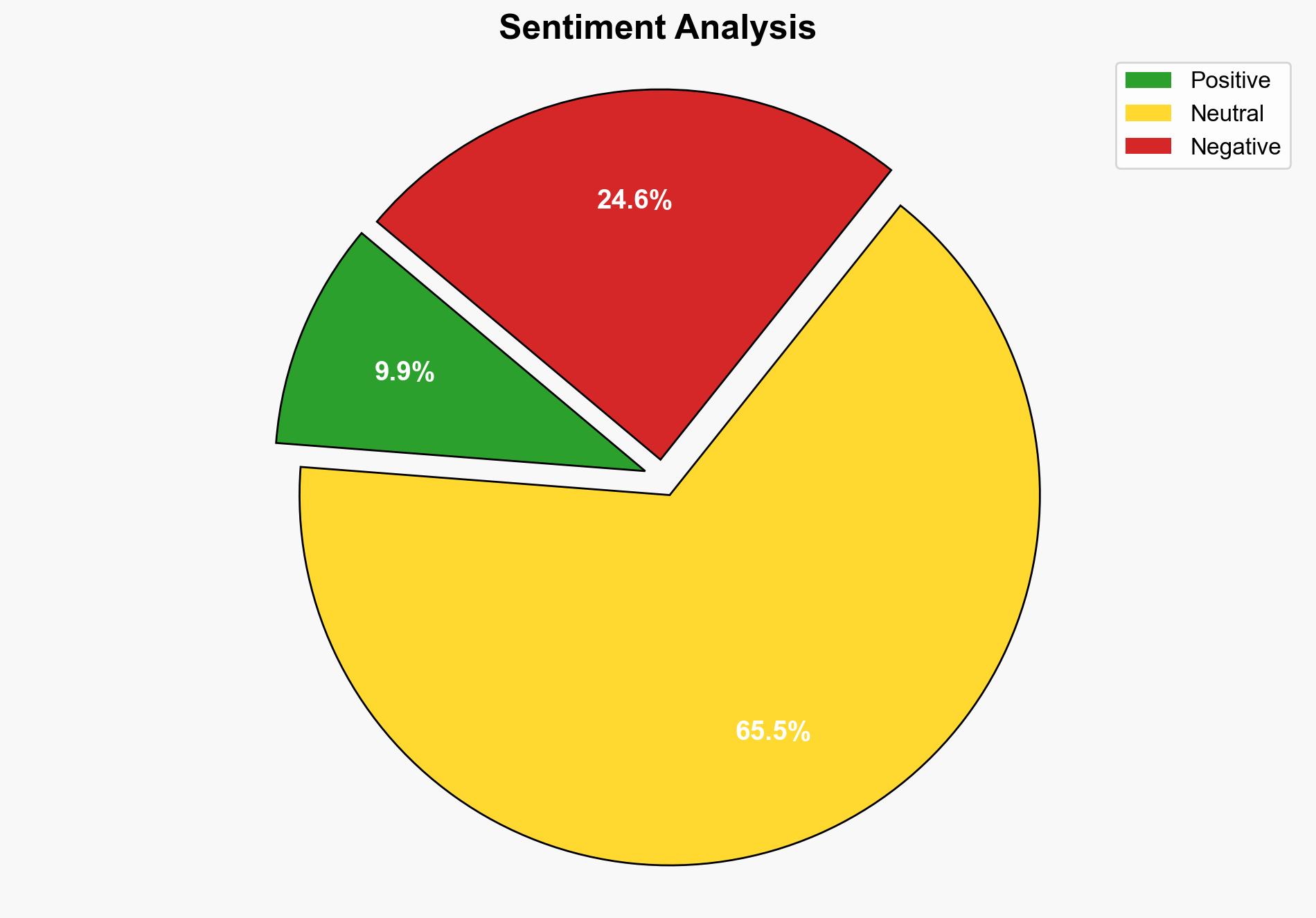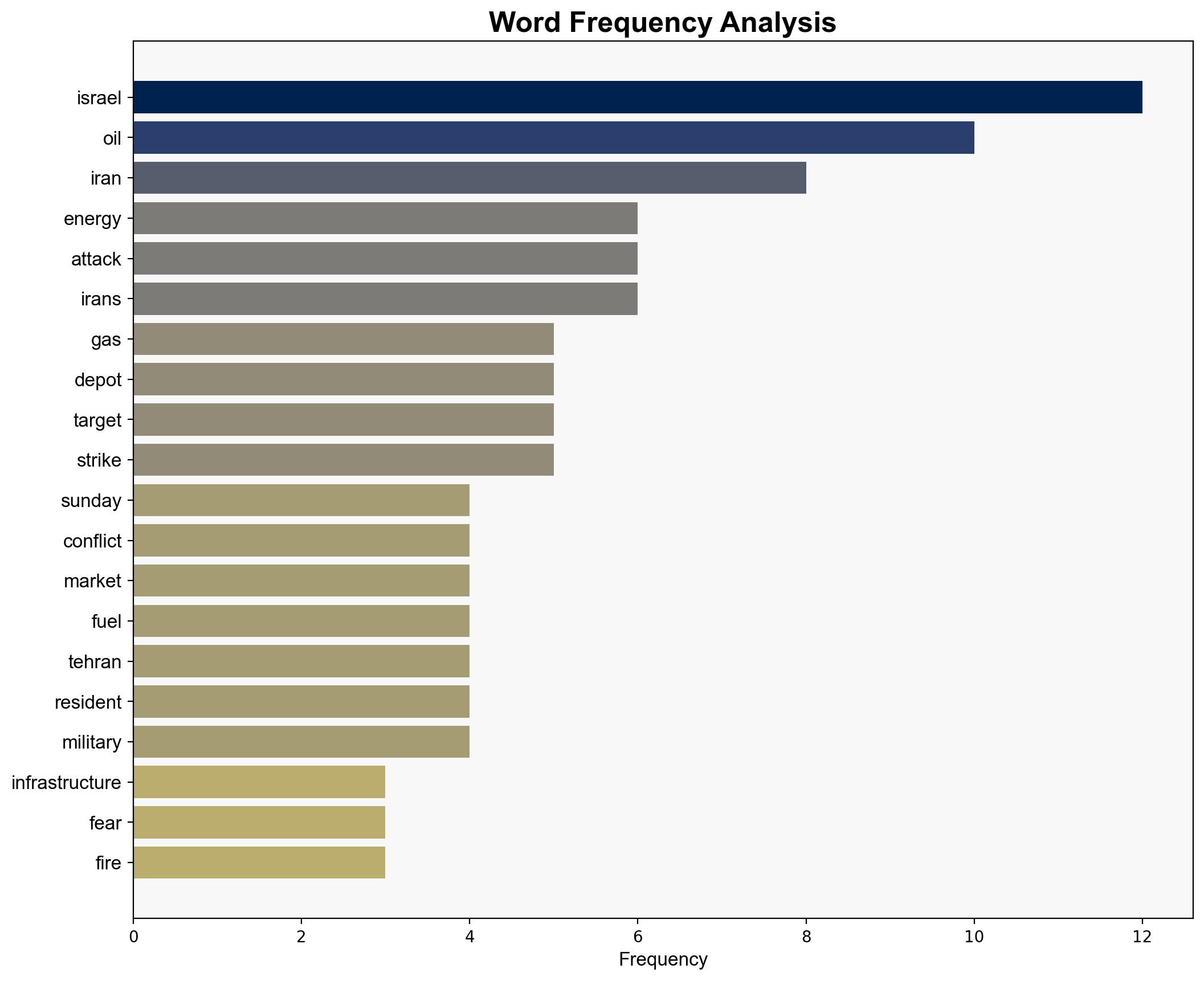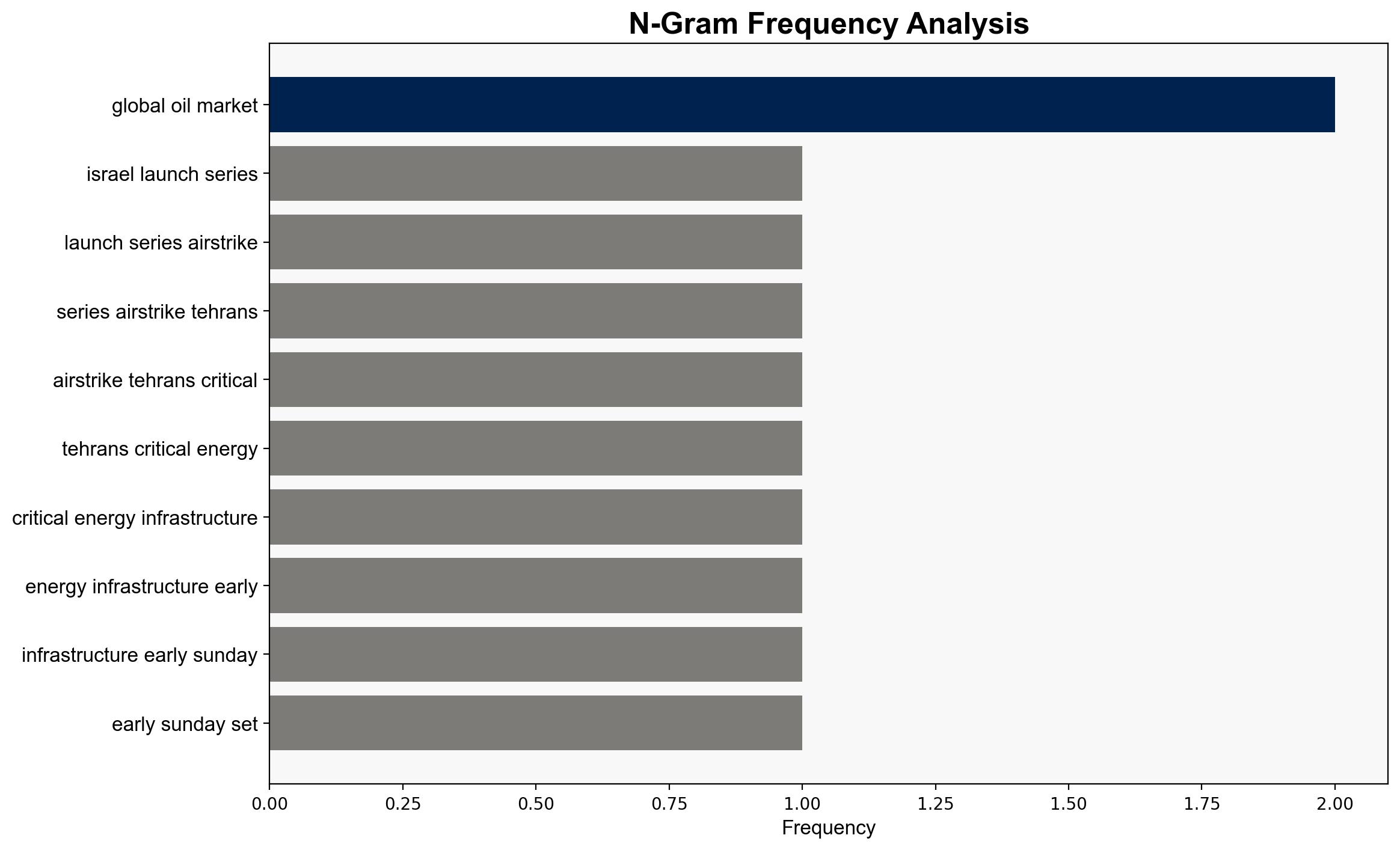Irans Oil and Gas Assets Rocked in Latest Round of Israeli Attacks – OilPrice.com
Published on: 2025-06-15
Intelligence Report: Iran’s Oil and Gas Assets Rocked in Latest Round of Israeli Attacks – OilPrice.com
1. BLUF (Bottom Line Up Front)
The recent Israeli airstrikes on Iran’s critical energy infrastructure mark a significant escalation in regional tensions, with potential global economic repercussions. The attacks on Tehran’s gas depot and oil refinery have heightened fears of a broader regional conflict, impacting global oil markets and complicating diplomatic efforts. Immediate strategic recommendations include enhancing regional security cooperation, monitoring oil market volatility, and preparing for potential disruptions in energy supplies.
2. Detailed Analysis
The following structured analytic techniques have been applied to ensure methodological consistency:
Causal Layered Analysis (CLA)
Surface events include the direct attacks on Iran’s energy facilities. Systemic structures involve the ongoing conflict between Israel and Iran, with broader implications for regional stability. Worldviews reflect the entrenched hostilities and geopolitical rivalries. Myths include narratives of existential threats and regional dominance.
Cross-Impact Simulation
The airstrikes are likely to exacerbate tensions in neighboring countries, potentially drawing in additional state and non-state actors. Economic dependencies on Iranian oil could lead to increased volatility in global markets.
Scenario Generation
Potential scenarios range from a contained conflict with limited regional impact to a full-scale war involving multiple regional powers. Each scenario presents different challenges and opportunities for diplomatic intervention.
Bayesian Scenario Modeling
Probabilistic models suggest a high likelihood of continued hostilities, with a moderate chance of escalation into a broader conflict. Diplomatic interventions could reduce the probability of a worst-case scenario.
Narrative Pattern Analysis
Ideological narratives from both sides emphasize retaliation and defense, complicating de-escalation efforts. Understanding these narratives is crucial for effective threat assessment and strategic communication.
3. Implications and Strategic Risks
The attacks reveal vulnerabilities in Iran’s energy infrastructure, with potential cascading effects on global oil supply and prices. The conflict poses risks across political, military, and economic domains, with potential cyber threats targeting critical infrastructure. Regional instability could lead to increased refugee flows and humanitarian challenges.
4. Recommendations and Outlook
- Enhance intelligence sharing and security cooperation among regional allies to mitigate immediate threats.
- Monitor oil market trends and prepare for potential supply disruptions by diversifying energy sources.
- Engage in diplomatic efforts to de-escalate tensions and promote dialogue between conflicting parties.
- Scenario-based projections: Best case involves successful diplomatic intervention; worst case sees escalation into a broader conflict; most likely scenario involves continued low-intensity conflict with periodic escalations.
5. Key Individuals and Entities
Mostafa Sham, Shirin, Abdollah Babakhani, Samy Chaar, Alex Morris, Michael Kern, Donald Trump, Vladimir Putin.
6. Thematic Tags
national security threats, cybersecurity, counter-terrorism, regional focus





